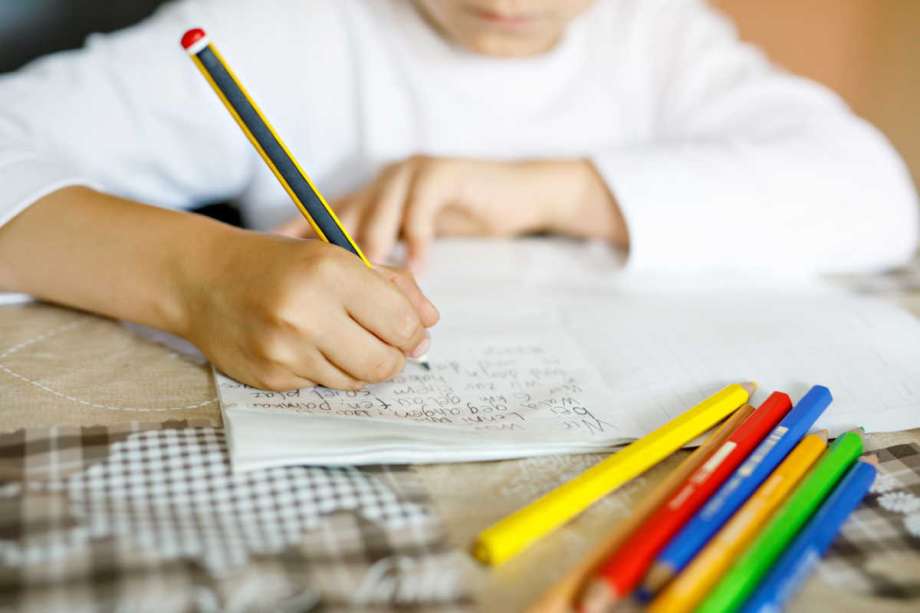At-Home Learning Resources for the COVID-19 Outbreak

Every working parent has time management challenges. Most of us have systems that we rely on to manage our family and work responsibilities (thank you Google Calendar and Wunderlist!). One of those systems is our schools.
Thousands of those schools have closed their doors due to COVID-19. Many parents are working remotely, and many of us are wondering how to structure our days. Teachers have been tasked with developing remote learning plans and using them to keep students on track. The organizational challenges we are facing at home and in our schools are unprecedented.
More: How to Help Your Child With Online Learning
As a former teacher and mom of three who is now the Head of Content and Curriculum for TeacherVision, I am right there with you in wondering how it is possible to work, care for my family, and teach during such a confusing and fearful time. Below you will find:
- A sample daily schedule for at-home learning during
- Daily checklists
- Free learning resources and materials
- Emotional support and stress management resources
- Daily movement and activity exercises
- Reflection resources
Creating a Schedule For Kids Home During the COVID-19 Outbreak
Whether you are a parent or a teacher, you are undoubtedly thinking about how to help kids learn and thrive despite these challenging circumstances.
TeacherVision and FamilyEducation have partnered to bring you resources we hope will make scheduling children’s days less daunting. We designed this schedule and share these resources with the hope that you can develop temporary systems that create a positive routine for you and best support kids in the weeks to come.

A suggested schedule parents can follow to maintain learning while kids are home during the COVID-19 outbreak.
9 AM: Set an Intention and Expectations
Set Clear Expectations and Review Them Each Morning
Anytime you introduce children to a new structure or routine, it is helpful to set clear expectations and discuss what success will look like. Use the Daily Tasks Checklist to chart out a schedule that everyone can buy into and understand.
For busy parents who are juggling work and supervising their children while school is closed, there is a box for students to check off the task when it is completed. Most importantly, there is a self-assessment. When you first start creating a daily schedule, you need feedback on how it is going. If a child circles the frown face that is an indication that they either didn’t have enough support to complete the task or it wasn’t engaging enough. Use the self-assessment as a conversation starter as you troubleshoot your schedule and tools, and be prepared to make adjustments.
Support Kids In Making Good Choices
If you are working from home and caring for your children, you will need to schedule some self-guided activities. It can be challenging for children to manage their own time, maintain focus, and complete tasks without adult support and supervision. Use the Behavior Checklist to set clear expectations. Write out behavior goals using empowering “I can…” statements. Some examples include “I can follow my schedule” and “I can ask for help when I need it.” There is a place for kids to check if they met the expectation or not, and there is a place to reflect on how it went.
Resources to Use:
- Daily Tasks Checklist
- Behavior Checklist
- How to Create a Learning Space for Your Child
- Developing a Home Classroom
10 AM: Academic Time
With so much going on in your own life, sitting your kids down with the iPad or TV might seem like an easy way to occupy them while you get other things done. However, it’s important to maintain learning while at home.
Balance Academics and Play
Some schools are putting distance learning into place, while others are not providing materials for parents. Depending on how much support you receive from your child’s school, you will need to plan a learning/play schedule. As you plan, think of activities that combine learning and fun. One of our favorites is to ask kids to read a book, and then watch the movie.
Resources to Use:
Build In Opportunities For Choice
While it is helpful to provide structure for children, it is also important to give them choices. Choice Boards provide nine different activities for the same topic, support academic skill-building practice, and build in opportunities for choice.
Resources to Use:
- Numerise, a simple and fun way for kids to practice math at home
- Learning at Home Reading and Writing Choice Board
- Learning at Home Math Choice Board
- Graphic Organizers & Choice Boards
- 10 Everyday Ways to Keep Your Child Reading While Having Fun
- Eureka! 5 Easy Ways to Grow Kids' STEM Skills at Home
- Top 10 Math & Science Apps for Your Whiz Kid
11 AM: Feelings Check-In
Help Kids Express Their Feelings and De-Stress
Many kids are feeling anxious and confused right now. Schools closed with little notice, and the daily routine looks very different right now (or is missing altogether). It is important to find time in the day to check in with children and use strategies and activities to help them express their feelings and de-stress. You can use breathing exercises, mantra activities, “feelings thermometers," meditation, and more to help kids relax and be present in the moment.
Alyssa Bellardino, a third-grade teacher in Roxbury, NJ believes it is important to incorporate social-emotional learning (SEL) into distance learning models. She created a Daily SEL Challenge. This free resource is full of activities that motivate kids to complete acts of kindness and connect with family members and friends.

Children can choose one of these social-emotional learning tasks to do each day.
Resources to Use:
- Animal Breathing Outlines
- Create a Mantra Activity
- Feelings Thermometer
- Ommm! 5 Meditation & Mindfulness Activities for Families
12 PM: Get Kids Up and Moving
Kids need movement in order to learn and thrive. Professor Peter Gray writes about the power of play and unscheduled downtime for kids. He recommends that children play before they eat lunch, and that they have opportunities for unstructured play. Christy Frank, an instructional technology integrator, designed The ABCs of Screen-Free Time At Home so parents and teachers could support students to take screen breaks and get moving despite school closures due to COVID-19.

Children can choose one of these at-home learning activities to complete during academic time.
Resources to Use:
- The ABCs of Screen-Free Time At Home
- 5 Quick Indoor Games for Kids
- 20 Fun Brain Breaks Activities Cards
1 PM: Rest
2 PM: Free Choice Reading and Snack
Resources to use:
- Guide for Story Reading
- Questions Before, During, and After Reading
- Reading Strategies Choice Board
- Books In a Bag Activity
3 PM: Get Moving
Resources to Use:
- The ABCs of Screen-Free Time At Home
- 5 Quick Indoor Games for Kids
- 20 Fun Brain Breaks Activities Cards
4 PM: Reflect
Check In With Your Kids
Take the time to circle back to the Daily Tasks and Behavior Checklists, and talk to your kids about how things went. Use this as a learning experience for parents to understand what worked, what didn’t, what needs more time, less time, etc.
Resources to Use:
Learn From Homeschooling Parents
Even if you didn’t intend to homeschool your kids, there are parents who willingly make this choice, and have developed structures and systems that work. From finding the teaching materials you need and developing a home classroom to what is needed for a positive homeschool experience, we can learn a lot from parents who are already doing this with great success.
Resources to Use:
- Understanding and Obtaining the Teaching Materials Available to Your Homeschool
- Developing a Home Classroom
- What Is Needed from You to Homeschool Successfully?
- Homeschooling Two or More Children
- Finding Homeschooling Mentors
- Daily Tasks Checklist
- Behavior Checklist
It wouldn’t be possible to get through the next few weeks without technology and screens (Thanks, Disney+ for giving us Frozen II three months early). There are so many different apps and resources out there, and many companies are making them free for teachers and parents. Every single resource including worksheets and lesson plans on TeacherVision is free. Here’s how to get started.
For a homeschool schedule for the 2020/2021 school year, check out free printable sample schedule.
More: 25 Toys, Books, and Games to Stock Up On Before We're Stuck Inside this Winter
Check back for continuous updates...

